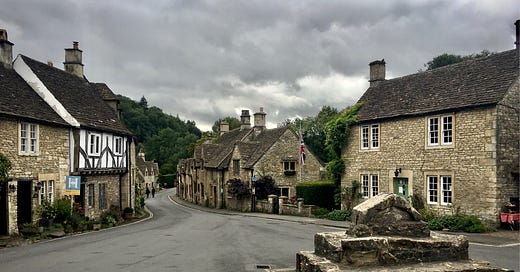Photo by on Olivier Collet on Unsplash
This week I saw a two-page advertisement for a company that manufactures “lifestyle communities” (or “resort communities”) for people aged 55 and up. With your purchase of a detached or duplex home, you can have such amenities as wellness and fitness center, pool, golf, restaurants and bars, outdoor sports facilities, and of course, connections to new people who share, if not your interests, then your age bracket. Most home prices start at about $500,000, although some can be had for less in less popular locations.
I’m sure many people find these lifestyle communities appealing. But if you could choose between spending your final years in your own home and moving to a retirement community, what would you prefer?
According to a 2010 survey by AARP, close to 90% of elders prefer to stay in their homes and neighborhoods as they age. Regrettably, it isn’t easy to do. .
A national movement has been trying to make it easier for the past two decades, and it is gaining momentum. Their solution is to create a “village” at home - in other words, to take a page from our pre-Industrial Age past when neighbors were more interdependent on one another, and to create something like that in urban centers.
Local Examples
There are several examples of villages in the Baltimore area.
A group called What’s Next brings together neighbors from South East Baltimore to learn together, play together, and provide mutual support. “We want people to get to know each other so they’ll be able to rely on one another without feeling like a pest,” explains Kini Collins, one of the group’s founders. “So we try to build a community of people who have some level of trust among each other.”
To do that, What’s Next offers a number of community-building activities for its members: ukulele classes, gardening tips, a course on researching the history of your house, game nights, watching TED talks, bird watching in the park, and more. “We meet in fun, informative ways,” says Collins. “One of our signature events is Forms and Wine, where people witness each other’s legal documents for power of attorney, medical directives, anatomy board, and so on.”
What’s Next is an all-volunteer group. Subcommittees plan social events, organize education events, mobilize volunteers for other community organizations, handle the website and communications. Sixty members pay the annual $10 dues. “We don’t want to go to a fee-for-service model,” Collins says. “We spend mostly on our website and to pay a couple of the presenters.
“Right now most of the members are older,” she says. “We want to broaden the focus from just aging in place to include everyone living here.”
What’s Next has some advantages. Many of its members moved into the area three and four decades ago as urban homesteaders and pioneers. “They’ve known each other most of their adult lives.” Not coincidentally, they retain some of that frontier spirit in their strong tradition of volunteerism.
Village at Home offers the same type of member engagement activities to its members, who live in 23 contiguous city and county neighborhoods stretching from Roland Park north to Ruxton.
Volunteers help members with minor services where members need an assist – things such as a ride to an appointment or flipping a mattress. For services requiring special skills, Village at Home vets plumbers, electricians, roofers, and other vendors.
Village at Home’s engagement activities are person-to-person. When the Covid-19 pandemic struck last March, Village at Home suspended all its services and activities because of the risks to its vulnerable members. When those activities can safely resume has not been determined.
Some villages find financial stability by coming under the wing of a larger agency. That’s the formula behind Northwest Neighbors Connecting, a village in Northwest Baltimore under the auspices of Comprehensive Housing Assistance, Inc., better known as CHAI. Program Director Anne Shimanovich calls the group a member-driven “virtual village” whose goal is to reduce isolation. More than 100 members range in age from 57 to 102.
Currently it serves residents in Cheswolde, Glen, Cross Country, Fallstaff, and Mt. Washington, “but you don’t have to live in Northwest Baltimore to be a member,” she says. “We’ve been branching out. It’s a diverse community. Anyone can join.”
In a typical month, members can choose from art, cooking, or movement classes, book club, a dialogue on diversity, and other small-group meetings. Village members also get technology support and a discount at a senior center. “Members support each other,” Shimanovich says. Additionally, members receive a daily check-in call from the staff. “We do whatever we can to help members,” she says, “whether it’s providing transportation, providing home repair services to seniors, food distribution, or access to vaccinations and medical clinics.
“Being sponsored by CHAI gives us a structure,” she says. Members pay $120 annually, with some scholarships available for those unable to pay.
Looking for a Village?
If the notion of aging in place in a village appeals, you can learn more about villages near you, or even start one yourself. The Village to Village Network, a national coordinating body, offers more information about the village model, a map of villages across the U.S., and guidance for those who want to start their own. Vtvnetwork.org





Great article! I am leery of the mega-senior communities, like Charlestown, having watched an aunt and uncle age there for at least 15 years. Though they're now benefitting from needed elder care (they are now in their 90s!), it was painful for me to see them in such a huge bubble--never having to leave the "campus" if they didn't want to. I hope to age in place in my own home.
Had no idea of these groups, great to know!